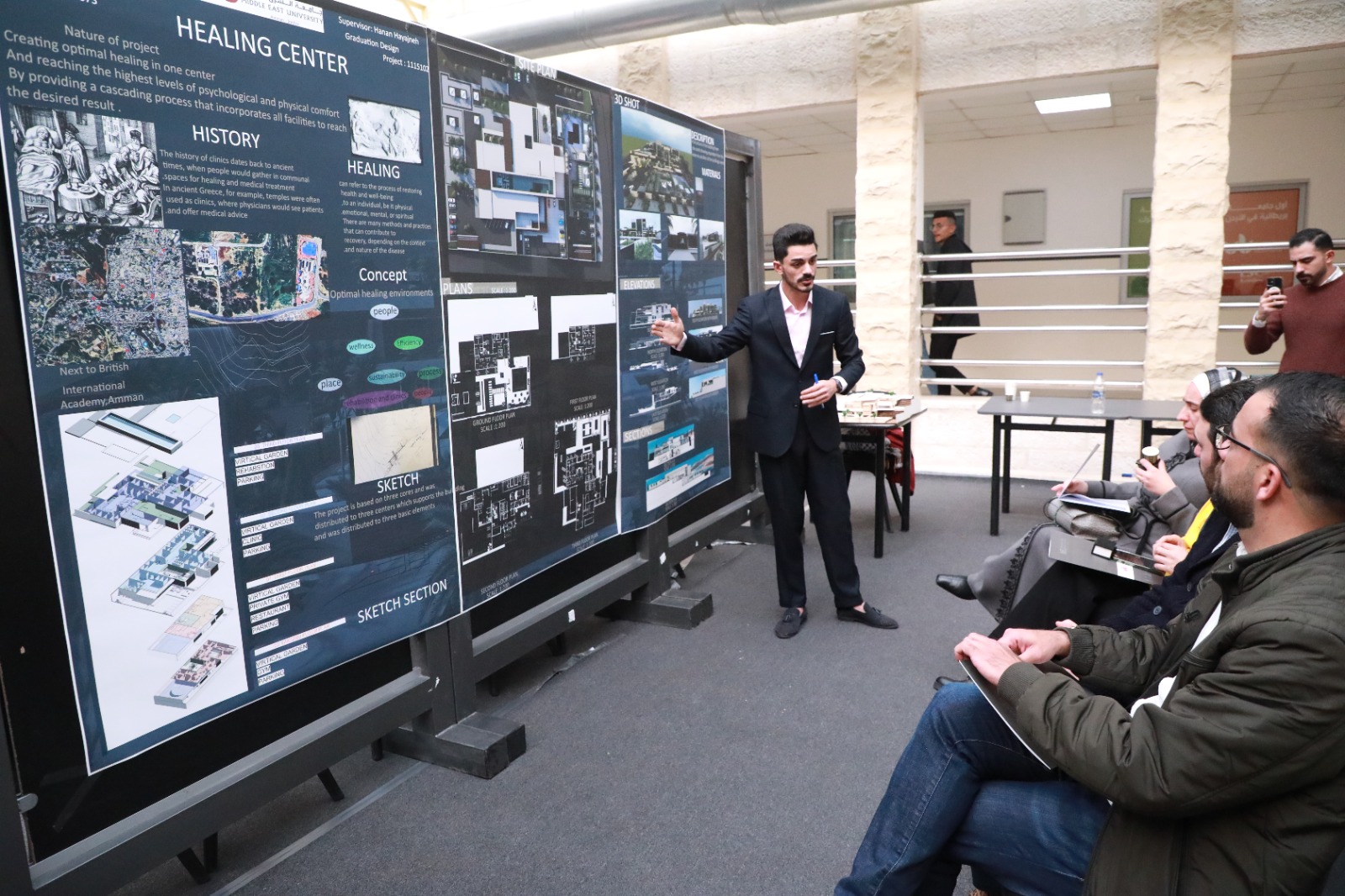
Amman: Over two days, students from the Faculty of Architecture and Design at the Middle East University presented their innovative projects that express human needs and community issues.
A group of faculty members, specialists, and experts were invited to discuss the students’ projects, which ranged from noble humanitarian projects that frame the memory of place, depict the principles of human goodness, and prepare for a future that is environmentally respectful.
The graphic design students’ projects, directed by the Head of the Graphic Design Department, Dr. Sattar Al-Jubouri, were presented in front of department members. They combined innovative design concepts with cutting-edge techniques to communicate ideas and discover practical solutions. On the same day, the interior design students’ final projects, supervised by the Head of the Interior Design Department, Dr. Ahmed Abu Hani, were presented in front of department members. The projects included advanced concepts for various interior designs as well as helpful guidance in the field.
On the second day, under the chairmanship of the Head of the Faculty of Architecture, Dr. Shaden Abu Safiya, and in the presence of the members of the faculty, the final projects of the architecture students were discussed, where elite architects and specialists in architecture were invited to participate in the discussion of the students’ architectural projects, which proved the students’ development and progress in the field of architecture and integrated designs related to the principles of environmental and social sustainability, with their architectural works expressing human needs, society, and issues with environmental, social, and economic impact.
In this respect, Dr. Ayman Awad, Dean of the College of Architecture and Design, stated that the projects embody the concept of community sustainability, which means creating environments that promote inclusiveness, equity, and resilience to equally foster the prosperity of individuals and communities, evolving from traditional methods that focus solely on function and efficiency to a more subtle interaction between social space, human behaviour and community perceptions, as in a project related to the construction of non-traditional housing that achieves equity in access to all resources.
